
Gothic portal from Notre-Dame at Reugny, from the late 12th century, made of limestone, in the Metropolitan Museum of Art (New York City)
A portal is an opening in a wall of a building, gate or fortification, especially a grand entrance to an important structure.[1]
Doors, metal gates, or portcullis in the opening can be used to control entry or exit. The surface surrounding the opening may be made of simple building materials or decorated with ornamentation. The elements of a portal can include the voussoir, tympanum, an ornamented mullion or trumeau between doors, and columns with carvings of saints in the westwork of a church.
Examples
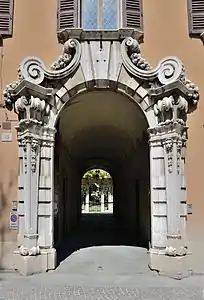 Baroque portal of a private palace in Brescia
Baroque portal of a private palace in Brescia Wooden portal of the Church of St. Victor in Dülmen
Wooden portal of the Church of St. Victor in Dülmen Romanesque portal of the Church of São Martinho de Cedofeita, with nested arches
Romanesque portal of the Church of São Martinho de Cedofeita, with nested arches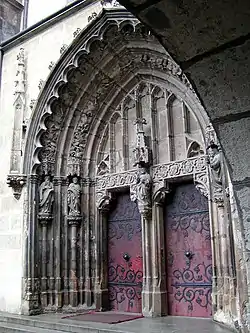 Gothic portal of the church in Hronský Beňadik
Gothic portal of the church in Hronský Beňadik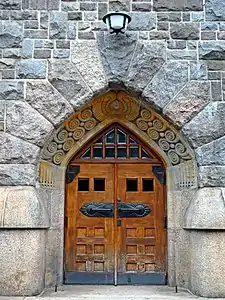 Romantic portal of the St. John's Cathedral in Tampere
Romantic portal of the St. John's Cathedral in Tampere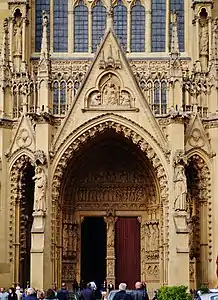 Gothic portal of the Cathedral of Saint Stephen in Metz
Gothic portal of the Cathedral of Saint Stephen in Metz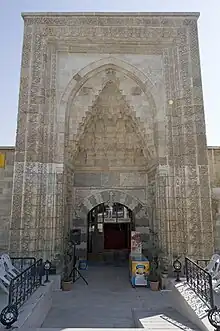 Taşkapı (stone gatehouse) of the Hatuniye Medresesi in Karaman
Taşkapı (stone gatehouse) of the Hatuniye Medresesi in Karaman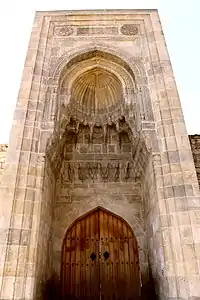
Other uses
The term portal is also applied to the ends of a tunnel.
See also
References
Wikimedia Commons has media related to Portals.
This article is issued from Wikipedia. The text is licensed under Creative Commons - Attribution - Sharealike. Additional terms may apply for the media files.